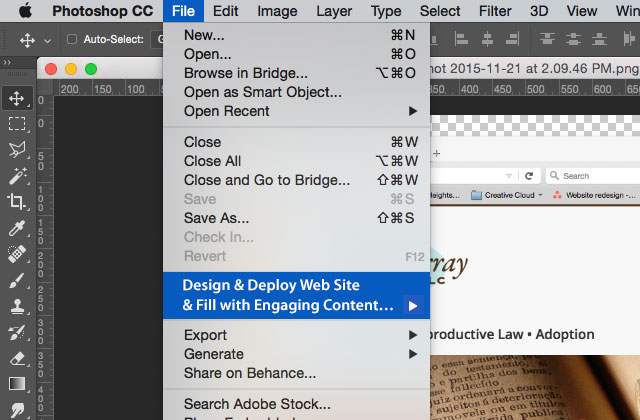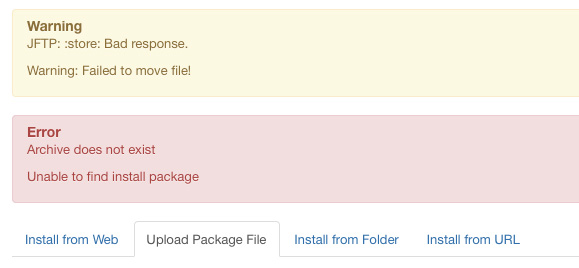 Yes, there are people who do believe this exists…
Yes, there are people who do believe this exists…
If you’re here, you likely already know that I am a self-employed Graphic and Web Designer. They used to call that “freelance,” but the reality is that I am running a small business. And much of what I do involves matching what I do, and what I am actually good at, to my client’s, and especially prospect’s needs. As a solo creative/consultant, my market generally is dominated by small businesses, small organizations and other individual entrepreneurs who are wanting to look better than what they can toss off themselves in MS Word, Vistaprint, and GoDaddy Website Tonight…
I spotted this one on a Reddit thread and it made me HOOT.
“Being a Joomla developer is easy! It’s like riding a bike. Except the bike is on fire, and you’re on fire, and everything is on fire because you’re in hell.”
The fellow does have a point…
This is coming off of a long and not terribly productive week. I showed up at Reddit essentially surfing my frustration. I have a Joomla site in development and have hit a documented and frustrating UNIX/Apache/PHP/FTP users and groups bug, which prevents uploads, updates and extension installs from within the Joomla back end. It’s just past MY frakkin’ tech level as a Designer and Front-end guy and have called upon a Joomla con$ultant.
But seriously, do the bastards have to be so complex and finicky? Quite frankly, I’d much rather draw than act the Systems Admin…
I commonly have to match how to deploy a web project with the needs and “tech level” of a client. Very often they desire to do their own updates and work on the site themselves once deployed. CMS solutions, Content Management Systems, where content and presentation are handled separately would seem to be ideal for the task. Using PHP and Javascript, the CMS pulls content from a database, and merges it with the HTML and CSS code to generate the page. In the back-end dashboard, site owners can be isolated from “breaking” the design, and manipulate their content.
WordPress is probably the most popular, with millions of WP powered sites out there, either free blogs or hosted sites on wordpress.com, or using the open-source software on their own hosting. Joomla!, another open source platform is more technically powerful, also a major player, but definitely more technical and complex.
If a client is not planning to do their own site updates or running a blog, they’re probably better off just having me code a basic HTML5/CSS3 site — perhaps using a framework for speed of deployment vs using a CMS like WP or Joomla!, and HTML/CSS frameworks, also mostly open source, are constantly improving. Two of the better known high level frameworks are Bootstrap and Foundation.
So the absolute First Thing I try to do with a new project is pin down a client’s use case and tech level and minimize my pain. I am not always successful, since it seems like clients 3/4 of the time — DON’T KNOW WHAT THE FRAK THEY WANT. I’ll build them the site they ask for, and when they see it they realize that was not the site they wanted…
But using a CMS does require some real investment in learning the system. This runs a little contrary to some clients belief that there is a magic software button labeled, “[Design & Deploy Web Site & Fill with Engaging Content… ]” – and that button for some reason is in Photoshop. However, if a client can’t handle the simplified MS Word-like interface of WordPress, there is NO WAY they are going to wrap their heads around the quite frankly insane complexities and finicky tech issues of Joomla. Thankfully for the project mentioned above, the site owners are actually focused, tech-aware and code literate; but it’s still been a very real learning curve for them with Joomla.
 If you think this should NOT be happening, you’d be right…
If you think this should NOT be happening, you’d be right…
The Joomla! back-end is murderously more complex than WordPress’s, especially if there are extensions, complex themes, or tricky plug-ins. Try to do E-Commerce, or run a dedicated blog extension, or add any other sophisticated or specialty functionality, they can be like entire other web sites nested within sites, with their own interfaces. For instance, the JooCart extension embeds a complete install of OpenCart within Joomla, with its own dashboard and back-end and runs an entirely separate database. Sometimes this kind of implementation will just BREAK things. Not to mention many extensions utterly ignore your themes’ styling and CSS, for their own, creating ugly collisions of design that guys like me have to crowbar and blackjack into getting along. Great. Just F**King WONDERFUL.
I still like what I do, and I am reasonably good at it. But I sure do appreciate a good print project to mix things up. Most clients can usually grok print. They can pick up and handle a print piece. Fold it. Get paper cuts. When you spray ink on paper, it tends to stay there.
Most of the time. Usually.
Resources
WordPress.com (free blogs & Hosting)
WordPress.org (Open Source WP software)
Joomla
HTML/CSS Frameworks Roundup
Twitter Bootstrap
Zurb Foundation
A version of this post appears on Medium.
Hey Kurt. This is a great post as always. Can I share it on the Pagan Business Network page? Actually, I might share more of your posts there every now and then. I can’t believe I didn’t think of you and your business before. If you have time you can join the facebook group they have. That’s more about sharing experiences, asking questions and a bit of networking as well. As more and more people join we’ve been getting more questions about web design and more requests for where to find someone who is at least pagan-friendly. But its up to you.
Do go right ahead. With my blessings!